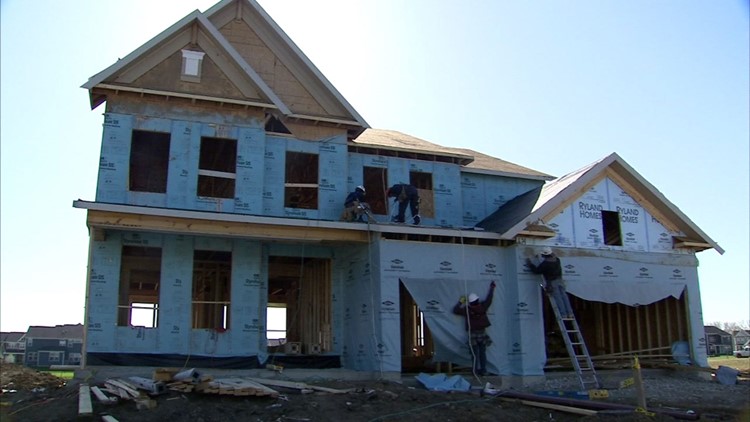If your home catches fire, would you and your family have enough time to escape?
You might be shocked to learn the skeleton of your home, the framing, may not be made of grown-in-the-forest lumber. It could be manufactured lumber, a strong, lightweight material that burns and collapses much faster than traditional lumber.
Across central Indiana, new homes are rising up out of farm fields. Many are just like yours - constructed with lightweight lumber. It's factory-made and engineered to support floors, ceilings and roofs.
It is super sturdy -- until there is a fire. Lightweight lumber, made from plywood, wood chips and glue, as firefighters have discovered, burns dangerously quickly. According to Wayne Township Captain Michael Pruitt, "It quadruples our risk."
First used in the 1970's, engineered lumber became commonplace in the early 2000's.
It’s taken years and lives for firefighters to realize the potential dangers.
"We started our first study in 2007, and a number of firefighters had to die before we got to that point," said Stephen Kerver, director of the Underwriters Laboratories' Firefighter Safety Research Institute.
Underwriters Laboratories (UL) found engineered lumber burns three times faster than traditional wooden supports. It fails in as few as 6 minutes.
Capt. Pruitt said their average response time to a fire is 5-8 minutes.
Some of Pruitt's firefighters helped Eyewitness News replicate a fire in a test setting. In that scenario, the manufactured lumber started losing integrity after 10 minutes. Meanwhile, 19 minutes in, the traditional lumber easily supported the weight of a firefighter standing on it.
UL estimates two-thirds of all new homes are built with engineered lumber It is a contractor's dream. It is eco-friendly, less expensive, a lot lighter than traditional lumber and just as strong -- except in a fire.
Departments are changing their firefighting and lifesaving tactics because of it. The potential of floors and ceilings collapsing sooner gives them much less time to rescue trapped or unconscious victims.
Last year, Indianapolis firefighters had only minutes to safely search the Wadleigh family's burning home. Fortunately, they escaped before the rescue crews arrived.
In front of her destroyed home, Judy Wadleigh admitted, "If it weren't for [the] smoke alarms, we wouldn't be here today."
A few states and communities, (none in Indiana we could find) now require special signs on commercial buildings warning firefighters of the lightweight building materials. Others demand homes built with engineered lumber have it covered and protected from flames by drywall or installed sprinkler systems.
Kerber said, "That is lifesaving."
But also expensive, he conceded.
"Many municipalities won't require it and therefore it doesn't happen; lives are certainly are at risk."
Because safeguards are so costly, some believe they will come only at the cost of more lives.
There are ways to minimize the risks to your family. Check the basement, crawlspace or attic to see if your home is made with manufactured lumber. If so, it can be covered with dry wall to help protect you. The easiest and least expensive advice is to have numerous smoke detectors with fresh batteries. The sooner everyone hears the warnings, the more time they have to escape a fire.



